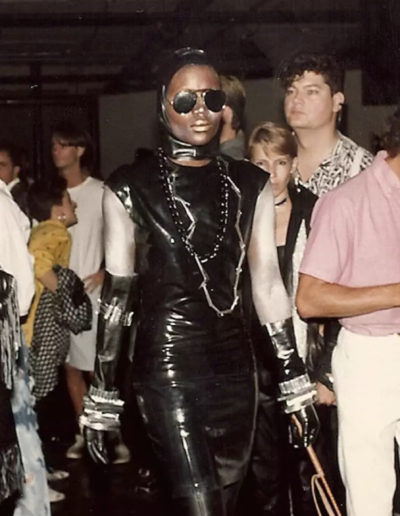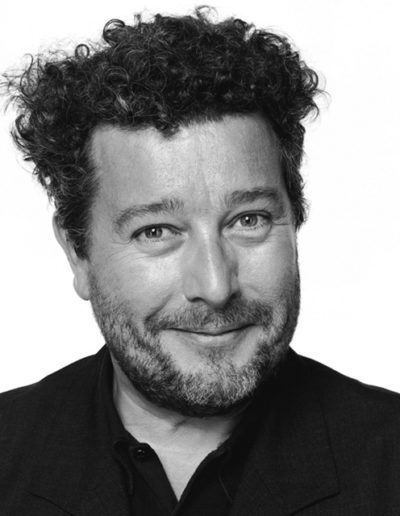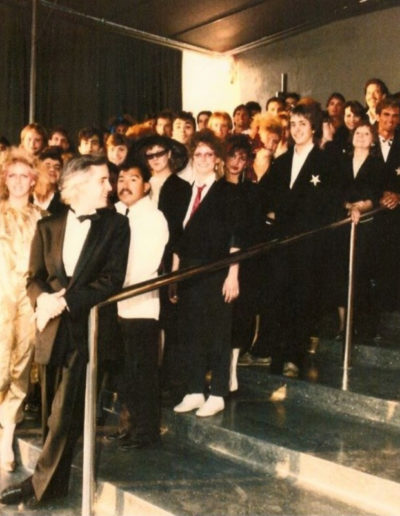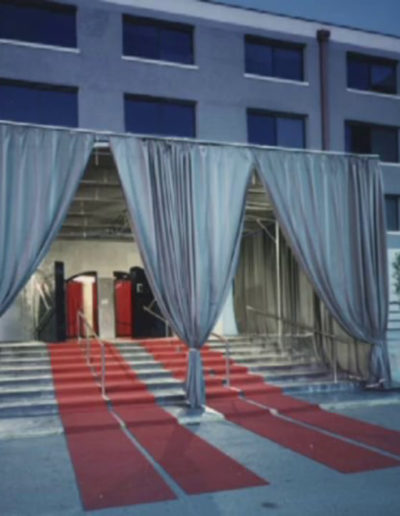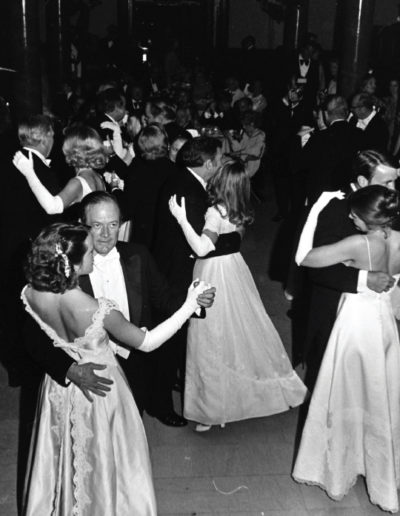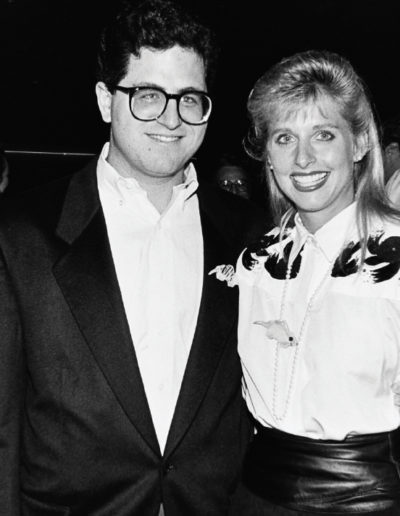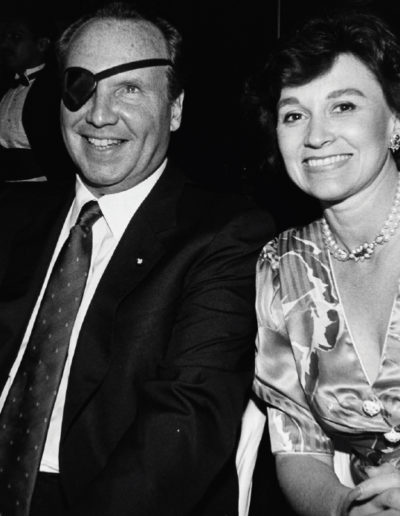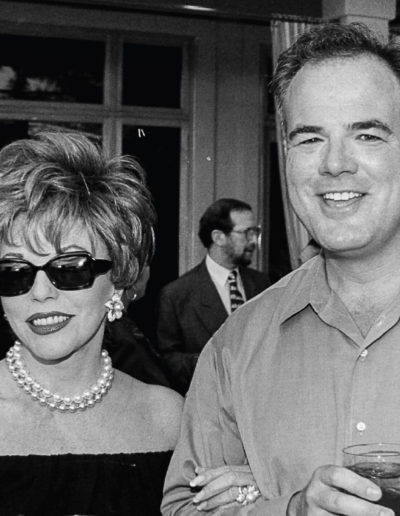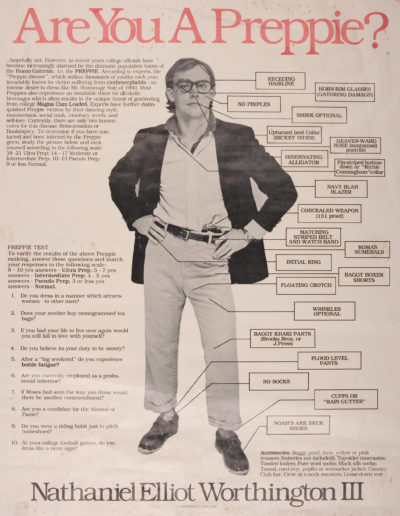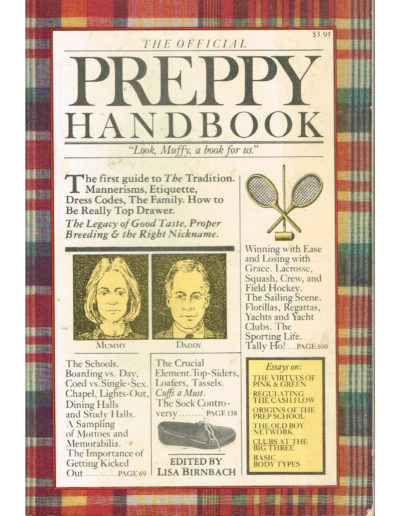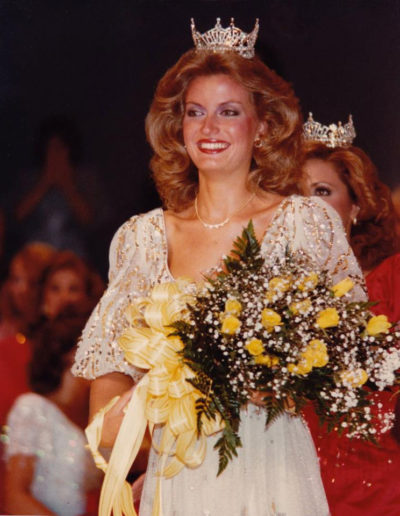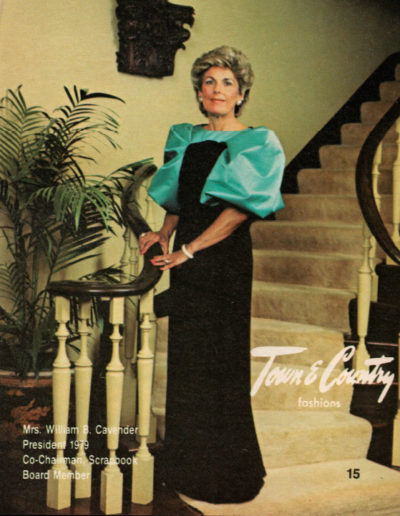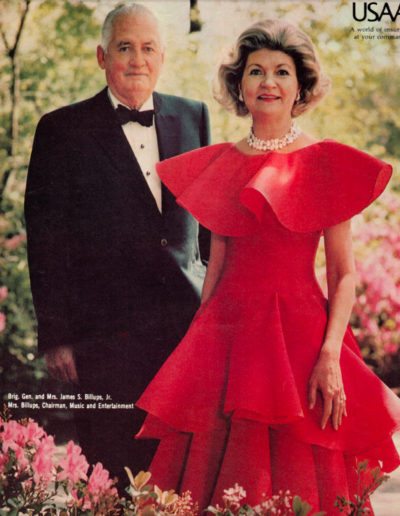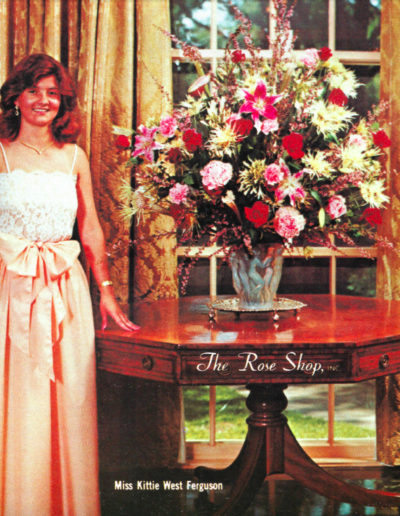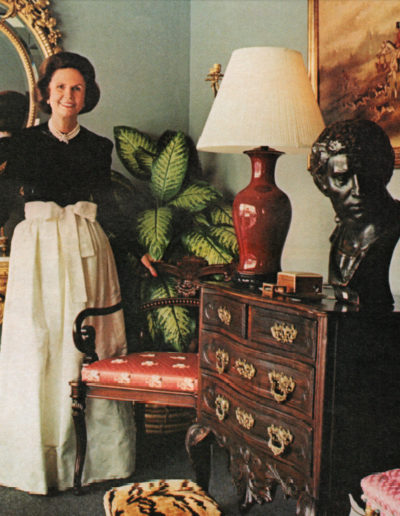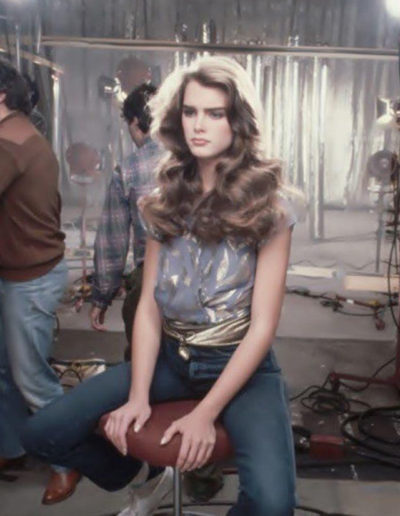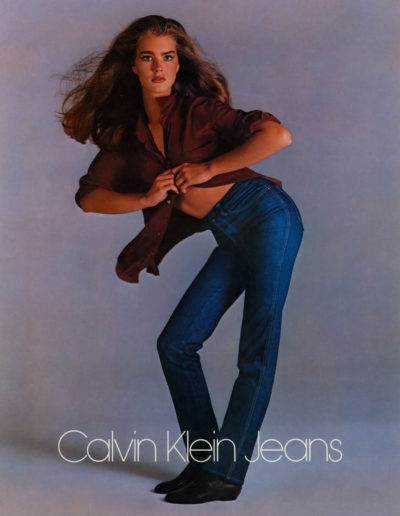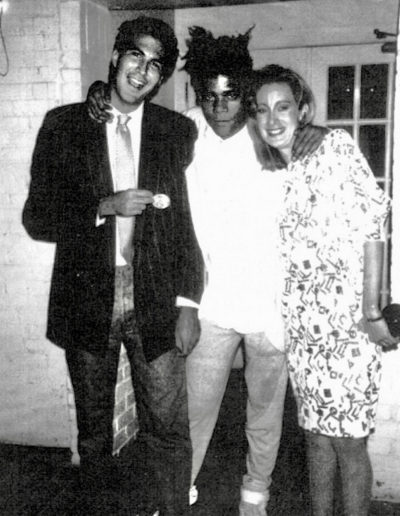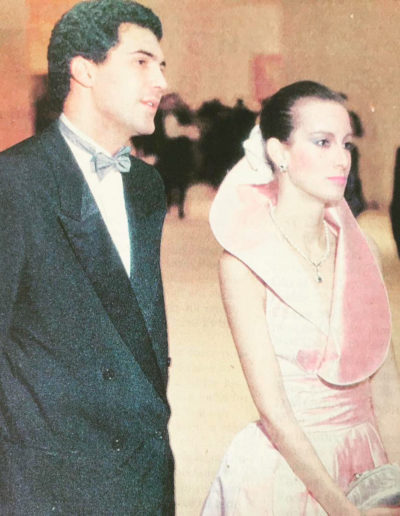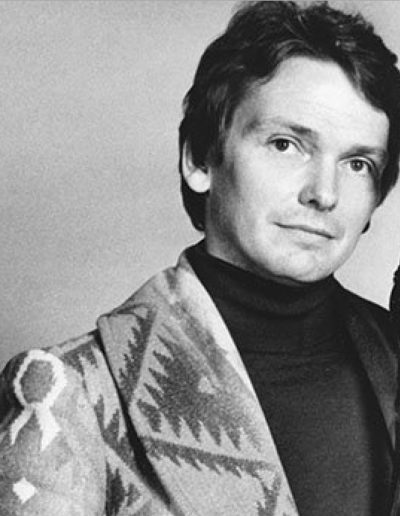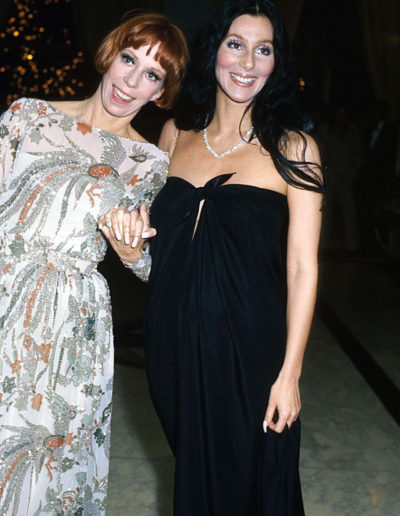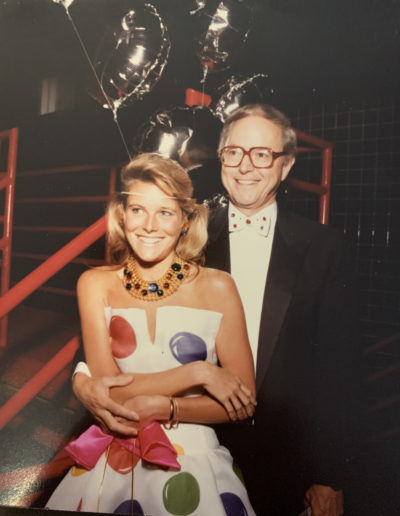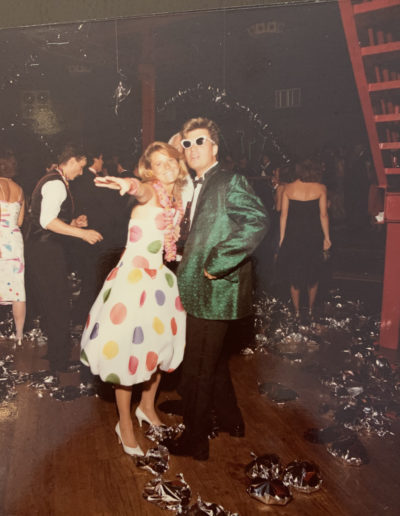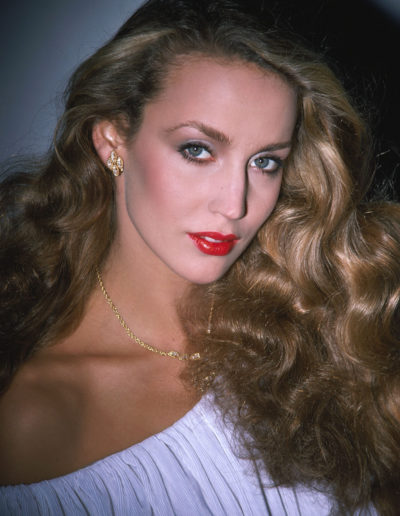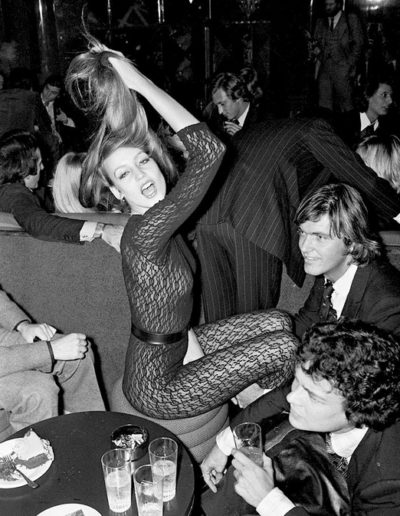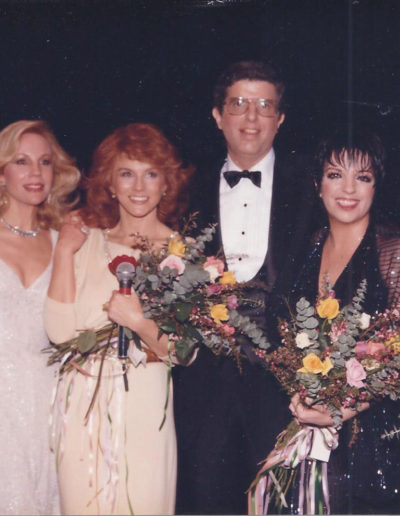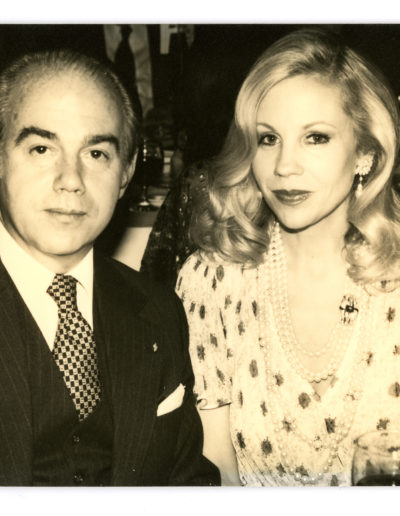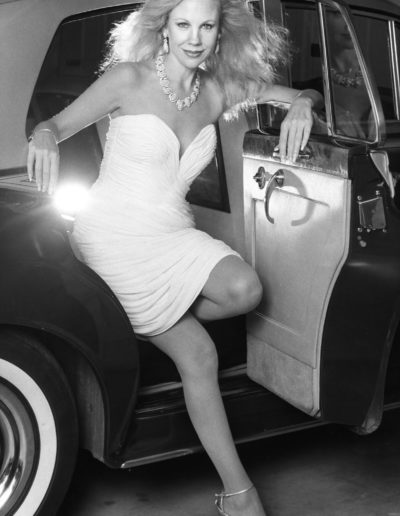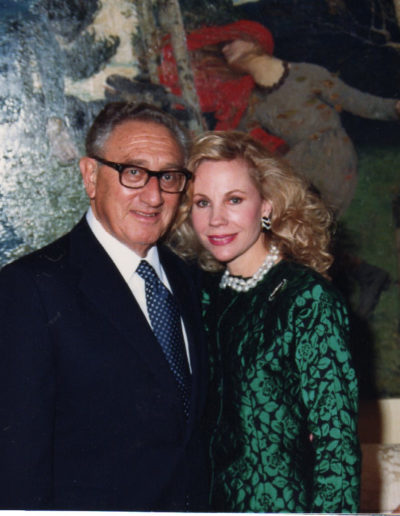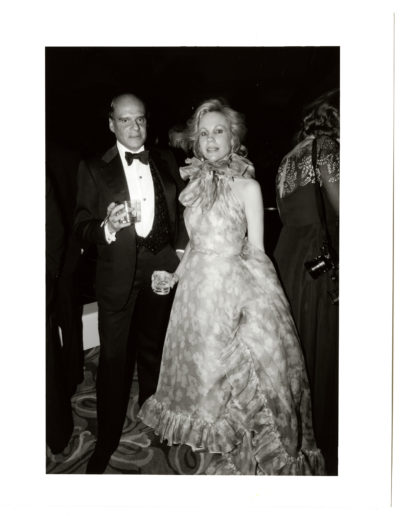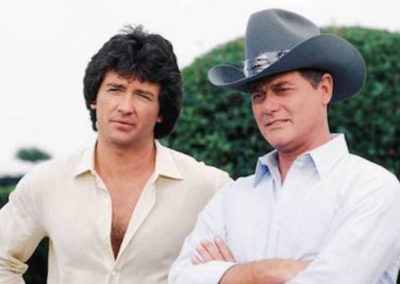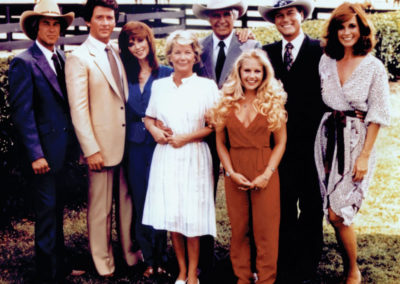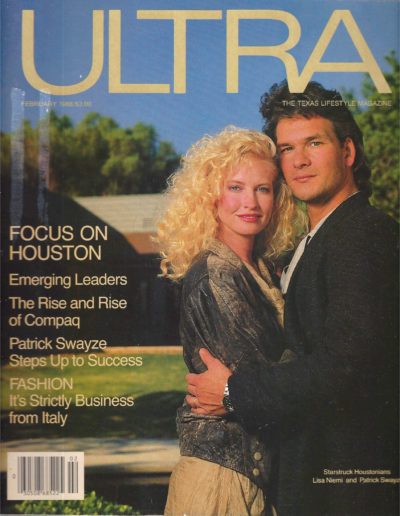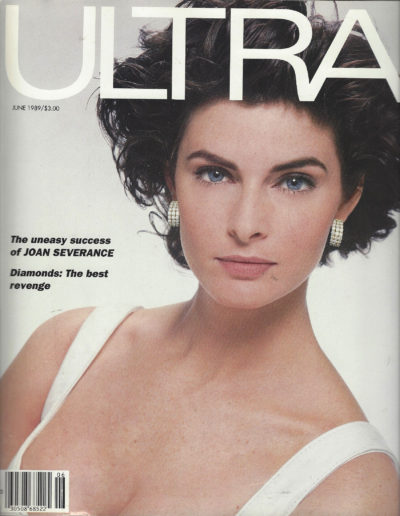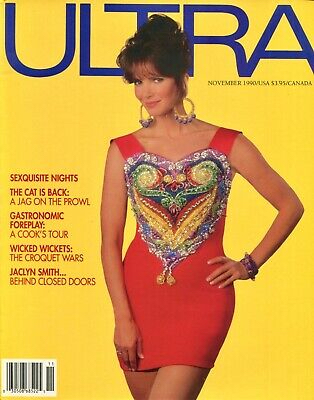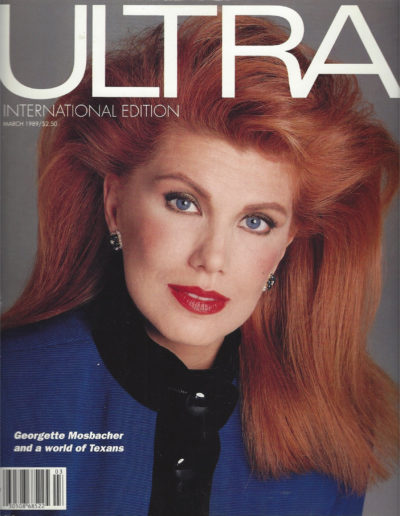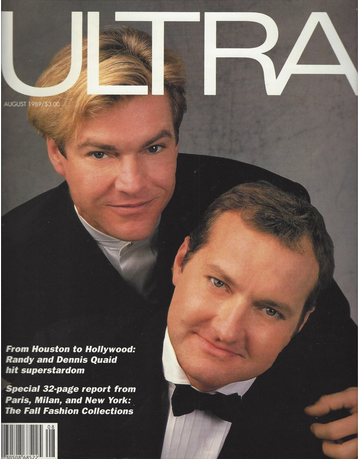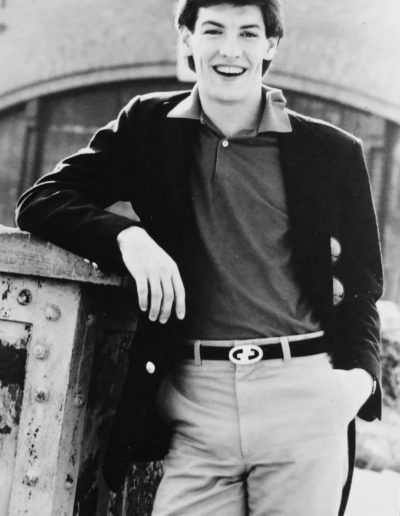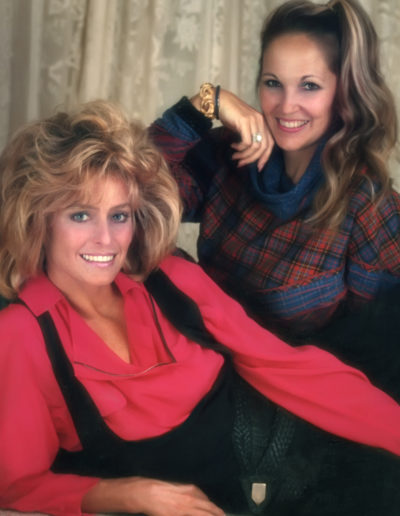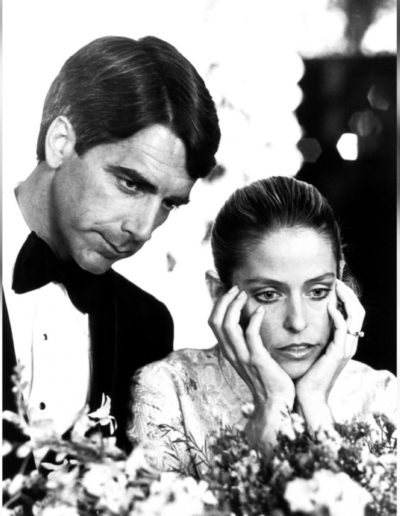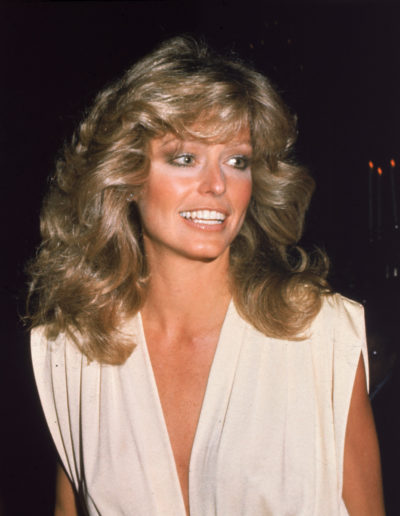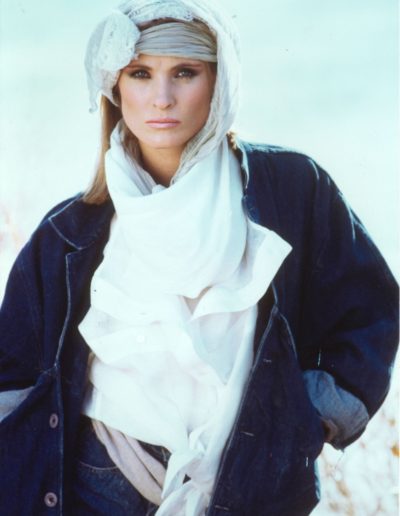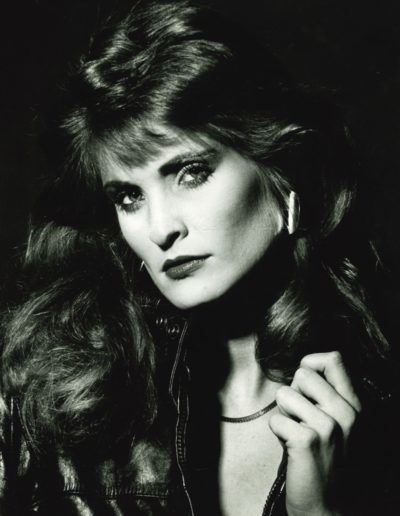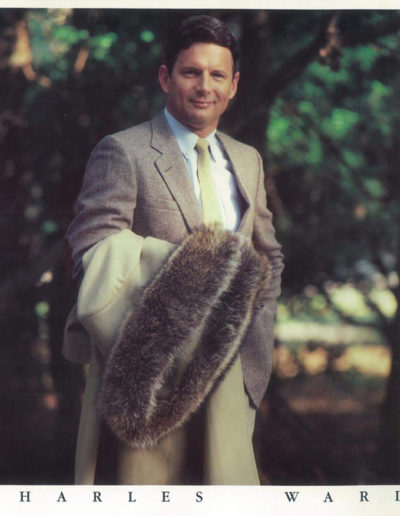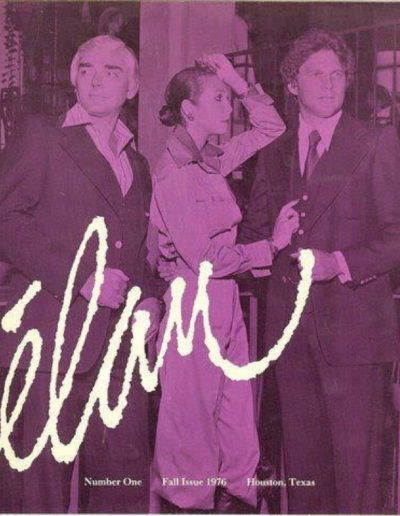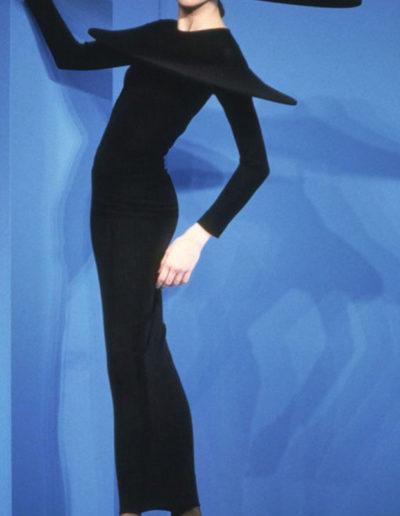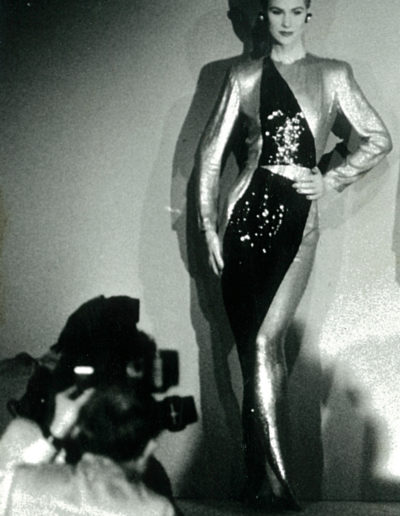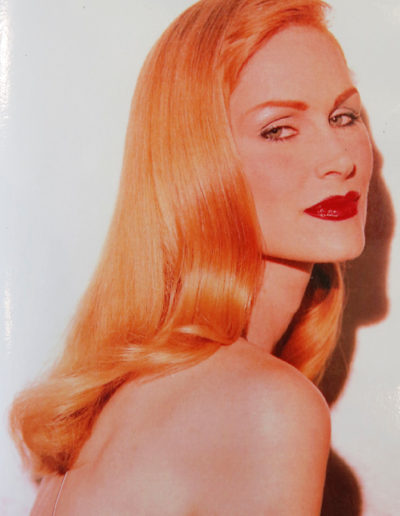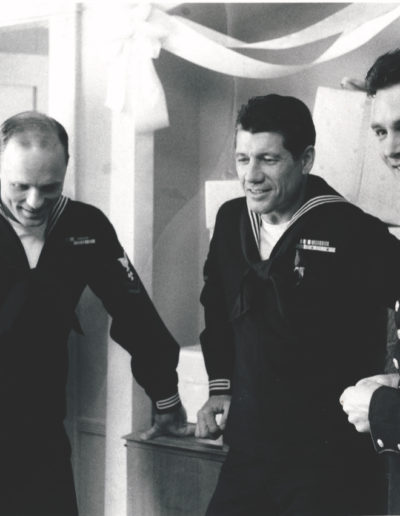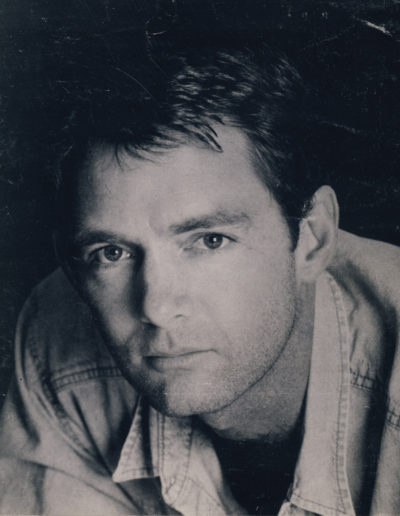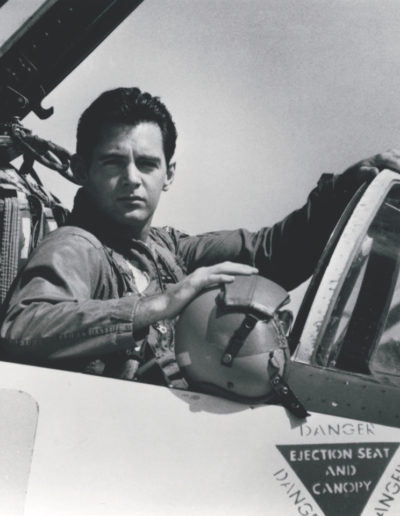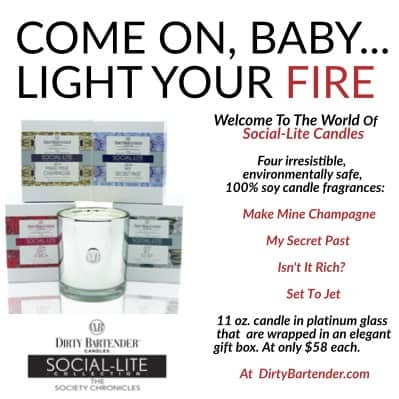
IN EXCESS
The 70s and 80s, in Texas and beyond, were a time of unbridled prosperity for the state’s movers and shakers. The can-do attitude of anything being possible unleashed a wild, unabashed party and caused a glorious hangover that exists to this day. Join our Lance Avery Morgan and a merry band of marauders as they time travel to the not-so distant past to recapture the Texan magic of yesteryear.
DESIGNER NIGHTS
Phillippe Starck, Designer & Creator of Starck Club, Dallas
And to think it all started in Paris, New York…and in Dallas. Dallas? French designer Philippe Starck created a sensation in the mid-80s by creating the first European-style nightclub in Dallas, named appropriately, Starck Club. It took the city by storm, as well as the state because it was in complete contrast to the ostentatiousness of the times. Then something happened. Philippe Starck brought cool and clean to what was, at that time, a very cluttered state. From his five-minutes-from-now contemporary vision sprang a streamlined, white warehouse club that the world, and certainly not Texas, had ever seen before. There was the night Grace Jones came in riding an elephant during the 1984 Republican Presidential Convention. And, the night Prince had a party after he performed at nearby Reunion Arena. Everyone has a story about the Starck Club.
Lance Avery Morgan: How different is Dallas now than when you were here in the 80s?
Philippe Starck: It’s a huge difference. When I arrived decades ago, downtown Dallas was a ghost city; everything was empty. And when I said that I wanted to make the Starck Club downtown, people laughed. They said, ‘Oh, you’re completely crazy–nobody will come.’ And because of those presumptions, I think we were the first.
LAM: Without a doubt, you were the first big city night club of that level in Texas.
PS: Yes, and the first thing like it downtown, and I think we really rocked. Just for being downtown. The cultural level of Dallas has incredibly increased in the decades since the 80s. The sophistication. The people.
LAM: And J.R. Ewing-types. No more of those, really.
PS: Ah, yes.
LAM: During the ‘80s, when your club was so popular, he probably came there…J.R…you know, Larry Hagman.
PS: Lots of important people came to the club.
LAM: Right.
PS: So, before, it was really difficult to bring a new idea and things like that. Now, Dallas is one of the main important international cities in the world. That’s why everybody’s here…our tribe. That’s why we don’t have to fight for the vision, no need to explain.
PS: I worked with people everywhere… in Dallas, Miami, Hong Kong, and other key hotspots… And when they need us, they call us, and we come. And when a place needed us, they would call us, and we would come.If a city didn’t call us, that meant a part of our “tribe” wasn’t in that city. I’m not a fancy guy. I started in night clubs just by luck. Some friends found this place and we said, ‘Oh, perhaps we can make something to bring the tribe all together.’
And because I arrived completely away from the nightclub business, I brought fresh ideas, and a sort of natural violence, so it was a huge success. We completely exploded because we were naive and pure. At that time, the night club was the people. The nightclubbers were people working in the day, and they would go out to have fun at night. It was not like some nightclubber people now. Now, they sleep all day and go to clubs all night. In my nightclubs years ago, there were all the best people, the people whonow drive the world. Everybody was there. And that’s why it was very interesting.
(Excerpted from an interview, 2006)
LET’S GET SOCIAL
Robert Godwin, Austin’s Society Scene
From the leftover hippie-dippie 1970s to the Dynasty-esque 1980s, the clothes may have evolved, yet Austin’s social elite never wavered in their aim to help the plethora of causes for those much less fortunate. “When I started covering the non-profit scene in 1976, the big four social events were already in place—Admirals Ball in August, Symphony League Jewel Ball in September, Bachelors Ball (which was in the fall, but moved to January) and the Helping Hand Ball in February,” remembers Robert Godwin (who now chronicles the St. David’s Foundation events) in his book about the city’s pre-1990 social scene, Austin Faces of Philanthropy. He goes on to say, “Philanthropy is a thread found throughout the fabric of everyday life in Austin. I’ve documented that thread running through three generations of families and am beginning to see the initial efforts of the younger fourth generation,” muses Godwin. “As that fabric is woven, it extends to cover friends, neighbors, and draws in those newly arrived. As it grows to shelter those in need, those clients add their own stitches to the fabric to create a cloth that is uniquely Austin. The city is a patchwork quilt of different colors, different hopes, and different dreams—but a common desire to be of service to others.”
PREP 101
Lisa Bernbach, author of The Official Preppy Handbook
It was like a shot heard ‘round the world when The Official Preppy Handbook appeared in 1980 after a raucous 70s. “Thinking back, for our moment in time, it was big,” confides the book’s author, Lisa Birnbach. “What I didn’t know in the intervening 30 years was that it was still big. People are so proprietary about what Preppy means to them. Preppies do love their art museums as well as conservation societies, which are both about preserving that which is old. It’s also a way to give without being reminded that people are suffering. Giving to the mentally disabled is a big one–look at the Kennedy’s who created the Special Olympics as an example.” “Let’s face it,” Birnbach muses, “I knew the Preppy world from the inside and outside. It has helped insiders feel more inside and has allowed people to understand more. I am a social observer and majored in Semiotics [every cultural phenomenon can be studied as communication], which is about what things represent. I didn’t try to change anyone’s life or make it over with The Official Preppy Handbook. I didn’t want to be famous.”
TEXAS-STYLE BEAUTY
Dana Rogers Martin, Miss Texas 1983, San Antonio & Las Vegas
In the 80s, everything was big. Big hair, big shoulder pads, long nails, lots of makeup, tanned skin—that was the 80s pageant girl. We personified Madonna’s Material Girl and pageants ruled because everyone was trying to be a Miss Somebody long before social media.
The 80s proved to be an incredible decade for pageants since each year the competition for the highest TV ratings was between the two annually televised giants: Miss America and the Super Bowl. Miss America was big business. Everyone in America, and hundreds of countries around the world, tuned in to hear ‘There she is, Miss America’ and see a beautiful crowned Barbie doll walk down the runway in Atlantic City. The Miss Texas telecast was also a ratings giant–each year the pageant was broadcasted to millions of people in Texas and the surrounding states. There was no shortage of contestants, either. In my year, 1983, a record number of 82 girls entered. That record is yet to be broken.
After I graduated from The University of Texas at Austin in 1984, I competed in the Miss America pageant the same year (the state title is one year behind the national title in name only even to this day). There were a couple of firsts: Vanessa Williams, Miss New York would be crowned the first African-American Miss America, and I would be the first contestant to admit publicly that I had undergone plastic surgery. Vanessa and I were interviewed by every major TV morning news and entertainment shows. Ironically, I was considered the scandal of the pageant that week. We know who beat me out in the ultimate scandal that year.
STEEPED IN HISTORY
Charity Ball, San Antonio
A constant in the social history of Texas is San Antonio society. The Charity Ball Association of San Antonio, lnc. supports the children of Bexar County by distributing grants each year since 1954, now totaling more than $21 million.The Association’s tenet is Children Benefit Always.
The 1980s were particularly prosperous times for the organization and its annual Chrysanthemum Ball. Full tafetta gowns and elaborate hair, that was also scene in the rest of the state’s society circuit then, was in full force in that decade of decadence.
TEEN DREAM
Brooke Shields, Model, and Actress, New York
For me, the 70s was a rather extraordinary time. I was able to meet and work with people like…Debbie Harry. I was able to be in rooms with Warhol and those incredible photographers who were renowned in what they were doing. The artistic matrix around that was so free and unfettered. There was a purity to it, I think.
Plus, I was working with extraordinary directors and talent. I mean, to come out of the gate and your first photographer is Scavulo, and your first director is Louis Malle? Clearly, I thought then that it was always going to be like that. It was a really beautiful and creative time. Sure, it was also tumultuous and political, but I was so young, that part didn’t really affect me.
(Excerpted from an interview, 2019)
RIGHT PLACE, RIGHT TIME
Bradley Bayou, Designer, Dallas & Los Angeles
What happened to me and my wife, Twinkle, at the time, could never happen today. All of us then thought, why is everyone coming here? Yes, Dallas was the #1 show in the world and the Dallas Cowboys were the #1 team in the country. In fact, Twinkle and I were even in a couple of Dallas episodes at the time as extras. Instead of looking to New York, Los Angeles, and London for style and energy, the world seemed to look to Dallas because there was a sort of mystique about the city then. Before that, they just associated Dallas with Kennedy.
I’ll never forget when we hosted three parties for Andy Warhol since we knew him from the New York scene. He was dying to come to Texas. He and Jean-Michel Basquiat stayed with us when they each visited. Our parties were legendary–Catherine Oxenberg, who was on Dynasty at the time, came to stay with us, and we hosted a dinner party for Rock Hudson…two weeks before he announced he had AIDS. It was all like being in an episode of Lifestyles of the Rich & Famous, which we actually appeared in, too.
But, really, it was all about Twinkle since she had the big blonde hair and a huge personality. People naturally gravitated to her. I just happened to be the guy standing there wearing a Zegna suit. It could never happen again–the innocence, timing, and over-the-top life that people lived vicariously through us like they saw people living on TV. Could you imagine if we had Instagram then–we weren’t ready for that. Life was more mysterious. We were in the right place at the right time.
DRESS TO IMPRESS
Bob Mackie, Fashion Designer, Los Angeles
The 70s were really busy for me. I was doing both The Carol Burnett Show and dressing Cher for her show. Sometimes dresses for them had to do double duty. Carol liked to accentuate her beautiful back and legs, so I’d make something backless for her. Then, later, to repurpose it for a Cher costume in a pinch, I’d turn it around and make the back of Carol’s dress into a low plunging neckline for Cher, and it usually worked fine.
Also, in the 80s, I could always tell a woman from Texas walking down Fifth Avenue. She always wore color amongst a sea of black.
OH, WHAT A NIGHT
Wendy Ward Payne, 1980s Debutante, Houston & Dallas
Party, party, party comes to mind when I think of the 80s. Of course, there were grand cultural events such as the opening of the Wortham Center in 1987, and thinking about events at Tootsies, as well as going to events at the Metropol, Michele’s, and Riches brings a smile to my face. At my deb party, at Rich’s in 1985, I wore a lovely Arnold Scassi dress. In fact, the dress happened to end up on the cover of a fashion magazine the following month. The party was called A Neon Night. How 80s is that?
MODEL BEHAVIOR
Jerry Hall, Model and Muse, Gonzales & New York
God that was a fabulous time. I was so young, hanging out with Andy Warhol. Neither of us drank so there we’d sit with our Perrier’s. Can you imagine? I adored it. It was so much fun, and I met every movie star there was…people such as Nureyev and Baryshnikov. I’d only read about them, and then I got the chance to know them.
(Excerpted from an interview in 2006)
GIVING BACK PASSIONATELY
Carolyn Farb, Philanthropist, Houston
The 80s was a life-changing decade for me, and I was on the front line of the call to duty. I was asked by the Challenger Space Shuttle widows and their families to create a living legacy in memory of the fallen heroes. We gathered at the Museum of Natural Science, where Jane Smith and June Scobee officially asked me to create the first Challenger Learning Center out of the nation’s collective grief. There are now 50-plus Challenger Centers across the nation and they are a favorite of Queen Elizabeth in England.
The late folk humorist from Austin, John Henry Faulk, said that I needed to help people with AIDS. So, the Evening of Hope came to be, and it began a movement of compassion.
Marvin Hamlisch and I joined together to fulfill a promise to Dr. John Stehlin to raise a million dollars in a single evening for the Stehlin Foundation. This raised the bar for all fundraisers to follow and was the first in the state of Texas that reached that goal. We invested our energy and passion enlisting superstars Ann-Margaret, Liza Minnelli, Crystal Gayle, and Allen King who donated their time and talent on behalf of cancer research.
Clint Eastwood and I did a benefit for the premiere of his movie, Sudden Impact, and his star power was so bright that we needed security to keep the guests at the after-party in check. I learned that Clint liked Mexican food and so that’s what we prepared for the dinner in his honor. We left in a motorcade of white cars that took us to The Galleria, where there were once movie theaters. I was accidentally quoted as saying, “The dog stole the show.”
My beloved son, Jake, got his first car as I watched him grow into a handsome young man. That was an interesting decade in my life with so many changes, and I feel I lived through the 80s with passion and heart.
REAL LIFE, IMITATED
Dwight Adair, Television Director, Dallas TV series, Austin
My first job in the movie business was serving as the dialect coach for John Travolta on Urban Cowboy. Dallas, at that time in 1979, was the number one show on the planet. I became the dialogue coach for the cast and guest actors in the series’ fifth season and became one of the principal rotating directors four years later.
To be one of the directors was the triumph of my career; that and directing another 80s icon, Dynasty. The inner relationships of the two casts could not have been more different. Everyone on Dallas understood what a fantastic ride they were on and were having a great time together, creating the first night-time soap opera. Dynasty, however, was another matter altogether.
Larry Hagman’s character, JR, was the quintessential 70s and 80s conniving, hedonist manipulator. In real life, you could not find a more generous, supportive, or loyal friend than him. The series was a worldwide phenomenon, and everything would stop everywhere on Friday nights for the show. And, I must say, one of the most humorous depictions of the character of JR was the version on Italian television. Hilarious.
THE ULTRA EFFECT
Ultra Magazine, 1980s
In the world of glossy magazines, Texas finally got its own in the 1980s, and it became the must-read for the affluent set and those aspiring to climb the social heights. It represented oodles of jewels, sky-high hair, and yes, lots of furs.
Appropriately titled and similar in spirit to Town & Country and Tatler, the Houston-based Ultra presented the richness, literally, of the Lone Star State. From its very beginning, the magazine reflected the upscale, grandiose, and intelligent personality of its reader.
The covers ranged from Patrick Swayze to Dennis Quaid to Jaclyn Smith, and other potentates of the era with Texas ties. Liz Smith, Liz Carpenter, and Rex Reed were just a few of the high-life chroniclers the publication enlisted to capture the essence of the globe-trotting Texan, from ballroom to night-club.
Gone, but not forgotten since it folded in the 90s, Ultra was the first publication to showcase the glamour of this state’s residents, and it remains a robust historical reference where we can reflect back to the way Texas was.
STUDIO 54’S MAGIC
Neal Hamil, Model, Houston
Of course, there had never been anything like it before, or since, like Studio 54. It was a moment in time that I can’t imagine will ever be fully replicated. I was a 19 year-old tall Texan model, which opened the door to Studio 54, and many other hotspots. I truly had the most fun ever. What a time to be alive.
I was lucky the first time I attempted to go, I exited my cab, looking over and past the throng of people hoping to gain entry. There was Steve Rubell, who pointed at me and signaled to me to come forward, and whooooosh I was standing inside. I went back for the next 120 nights and a million more over the years. I was never denied entry, and I met and made so many friends there because it truly seemed to be the center of the universe. Every night the place was crawling with the most glamorous people from all over the world, and I saw a lot of famous people doing a lot of naughty things.
My favorite moments were those when I was on the dance floor tripping the lights fantastic, and all of a sudden in the DJ booth would appear Michael Jackson, Diana Ross or Donna Summer…so many mega-stars. One night Peaches & Herb were performing on the movable bridge over the dance floor–it was surreal. Betty Ford, Liza Minnelli and Liz Taylor hosted a party once that was beyond fun. This was pre-Betty Ford Center, of course.
Plus, the fashion was really experimental and outrageous. Glittery and glamorous. I’ve always felt lucky to have experienced Studio 54 in its prime and to have been allowed “all access”.
THE IT GIRLS
Farrah Fawcett and Gray Hawn, Corpus Christi, Austin & Los Angeles
I’d been friends with Farrah since junior high school and I knew intuitively that there was something really special about her… and we remained dear friends all of our lives. Hollywood pursued her because she was that All-American golden girl. After being pursued by talent scouts at The University of Texas in the 1960s, she decided to go Hollywood, fell in love and then, married Lee Majors. It didn’t take long until she was cast in Charlie’s Angels. While working on that series, the iconic poster and the role really made her career take off. She was a phenomenon. I think America was falling in love with her, and it was for more than just beauty. I can remember everybody cutting their hair to try to make it look like Farrah’s…and she was on the cover of every magazine.
She did the series as long as she could, until she was ready to leave, which was not easy to do. I remember her wanting to pursue more serious film work. Later on, she was nominated for her television films, like 1981’s Murder in Texas, and her work became more appreciated. In 1983, she did Extremities on Broadway. We went to New York to watch her perform, I was totally blown away by her performance.
After the show, we had dinner with Farrah, Liza Minnelli, and Robin Williams. After that, Farrah kept reinventing herself. She was very smart and always negotiated her contracts. She was an advocate for the equality of women in Hollywood long before any of the things we see today had come to light.
Throughout all her fame, she never forgot her friends. She would always call when she knew someone might be going through a hard time, to check on them and see she what she could do to help. I had so much respect for her. I remember so many times that I’d meet her in Houston, but the very last one stands out. I was with my daughter, Joy, who was sitting between me and her and she said to me, ‘Even today, it’s hard to be Farrah Fawcett.’ It was a couple of months later that she found out she had cancer, she had more courage and bravery than anybody I knew. She wanted to share this experience to give hope to other people; She was a fighter and she was fearless. In the end, it took her life, but her legacy lives on in her diverse work generations to come will enjoy.
INTERNATIONAL GLITZ
Evelyn Haney Anestos, Austin and New York
I loved being a model in the 80s…you would have thought I hit life’s lottery. I have been obsessed with fashion my entire life, so getting to work with creative people from around the world, who would style inspirational outfits on me in unique locations, was a dream come true. It was mind blowing to me that I got paid to travel, wear beautiful clothes, and have so much fun. I worked with so many photographers over the years like Chris Micaud, Gregg Stevens, and Ian Lowry.
Modeling in Texas, we were always doing the shoots during the opposite seasons of the clothes. So, it would be 100 degrees outside and I’m wearing a wool coat and acting cold or… wearing swimsuits in the Texas winter, while jumping into a production car with the heat blasting in between shots.
I traveled around Texas quite a bit and then other parts of the US in my teens, and then in my early 20s, I moved to Barcelona and then Paris to model. This was a time when it was extremely uncommon for semesters abroad so for me to get to live in and travel around Europe for months was a life changing experience and one that was very uncommon for other young Americans at the time.
Reviewing my 80’s modeling pictures, I thought my hair was going to look bigger, but in the professional shoots, they actually made my hair look normal. I remember teasing and spritzing my hair all the time. Once I went to a casting at Christian Dior in Paris, the first week I moved there, and a guy came up to me and said, with his European accent, ‘Where in the United States are you from?” And, I proudly said, Texas. He then said, ‘It’s obvious because of your hair,’ turned his back on me and walked away.
I got to travel to so many interesting and beautiful places and met so many fun, fascinating, and cool people. I am still very close to many of the models I used to work with, and we have all stayed in touch over the years.
WELCOME TO THE CLUB
Charles Ward, PR Wiz, Dallas & Houston
I represented public relations for the hottest club in Houston in the 70s and 80s, élan. It was unique because there were no private clubs like it 40 years ago.
In our initial teaser ads, we showed Clark Gable with the headline, Clark Gable Had élan, yet it had no address or phone number. You had to find us. In the beginning, we assembled 7,000 names of affluent Houstonians and sent them complimentary 90-day memberships. Then, we deleted every fourth name, knowing that they were all friends, and the deleted ones we knew who would immediately buy a $125/year membership. The exclusivity worked.
Our client, Lance McFaddin of McFaddin Ventures, allowed our agency to do outstanding creative, unlike most club operations. The club attracted all ages and was known for having beautiful people as members. Happy hours were packed to prime the pump for an evening of socializing and dancing.
There was room to roam because we Texans love our space. The club was multi-level, with 17,000 square feet of game tables, dancing, a cozy library, bars, and an elegant restaurant. Backgammon was becoming popular, so we had backgammon tables in the bar, and that was a great way to meet new people.
Halloween was always a crazy, packed theme night. We targeted high profile Houstonians to throw parties for their friends. We published a magazine for members showing élan activities around the country.
Many may recall that élan was a major location in the 1979 film, Urban Cowboy…and my personal high rise was another location in it, too.
SUPERMODEL? SENSATIONAL.
Jan Strimple, Model, Dallas
I tip my hat off to J.R. and Sue Ellen for piquing the fashion world’s curiosity of Texas. My savvy European agents played up the Dallas angle by marketing me as ‘the 6-foot redhead from Texas’ and, the world’s top fashion houses took the bait. I’d slip on my Sergio Valente jeans, or a new pair of stirrup pants and dash off to my show fittings. While I couldn’t muster a sugared Texas accent, I non-apologetically delivered the fantasy glamour the fashion biz expected, wearing peplum jackets with projectile shoulders, dramatic scarves, and earrings large enough to float a family of four down the Nile. While sporting Madonna’s colored mascara or playing the Pac-Man between flights was not my thing, Flashdance-inspired layering was perfect for traveling. Donna Karan provide the biggest moments of the 80s good taste fashion which she split from Anne Klein and introduced gender power into the workplace.
Walking the finest runways in the world in the 80s was a wild ride. Theatrical shows ruled with the backstage consisting of a mélange of the top walkers, drag queens, the press, and supermodels. I seldom saw Cindy Crawford without her laptop, Anna Bayle without her cigarettes, Iman without her diva attitude, and Diane Dewitt without her Texas-bred warmth. They were all beauties with their own distinct style. We were like thoroughbred racehorses being prepped for the races–except those tracks were the runways. We were traded by agents to make zillions for them and hundreds of thousands for us. We’d hop on planes to do the circuit, starting in Paris, followed by a long weekend of shows in London, then it was off to Milan for fittings and shows.
Occasionally, the shows in Barcelona could be slipped in before New York and the Spanish designers were thrilled to get us on their runways. They encouraged us to return by giving us clothes in appreciation, which was a lovely job perk. Then, we were back on American soil to walk for the New York designers. That was the twice a year schedule of the fashion rat pack––seven weeks of non-stop fashion insanity. I’d be at tents in London, on Avenue Marceau in Paris, on Corso Garibaldi in Milan, or in New York’s garment district for fittings and see the same people in the airports, the showrooms, and at the shows. By the time the core models landed back in New York, we had all reduced one full size and the New York designers had to refit our looks. Madness. Complete, fabulous, fashion madness.
PLAYED BY
Todd Allen, Actor, Austin & Los Angeles
I became an actor while being a business major at UT. I was driving to our ranch in Johnson City to get my head together and think about what I wanted to do in life–I was supposed to be the one to take over my father’s insurance empire, but I knew that was not what I wanted. As I was driving, I saw movie trucks and lights at another ranch off the highway. I pulled over and walked in the gate. They, mistakenly, assumed I was the son of the property owner and immediately whisked me over the meet the director (an Oscar winner, which I did not know at the time) and the producer. After a couple of minutes, the director asked if I wanted to help rehearse the actors. So, I did. And then he asked if I’d like to be in the scene. So, I was.
After a scene where I thought I royally messed up, the director looked at me, reached into his wallet and pulled out a card. He said, ‘This is my private number in LA. When you get home, and you think about today…and you decide that this is what you are going to do for the rest of your life, and if you move to LA…call me. I’ll help you.’
I then decided to go to New York to attend acting school, and toward the end of my first year there, I was invited to attend a screening of Walter Hill’s great 1981 film, Southern Comfort. As luck would have it, I sat next to Hill. I introduced myself and we had a good chat. He told me he was about to do a film in Los Angeles called 48 Hours. A couple of weeks later, I got the call to come to LA, got an agent and got the role.
My ICM agent team kept trying to drag me into Brat Pack since I was young and the age of most of them. I was always invited to parties with Judd Nelson, Demi Moore, Rob Lowe, and the others, but I never wanted to be part of that group. I met Lawrence Kasden and was cast in Silverado, which meant I couldn’t play Demi Moore’s husband in St. Elmo’s Fire, the ultimate Brat Pack 80s movie.
I did tons of films, like Witchboard, which remains a cult hit, Swing Shift with Goldie Hawn and Kurt Russell, Mask that was directed by Peter Bogdonovich and starred Cher, Uncommon Valor where I played Gene Hackman’s son and tons of television. One of my favorite times was researching a role in an F-4 Phantom jet to play test pilot Chuck Yeager. There were so many fun times and rich experiences. It never occurred to me that I would not be successful. I just put my head down and went to work.

